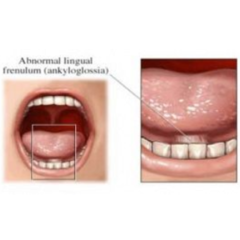Description
Ankyloglossia, or tongue tie, has recently become an area of discussion and sometimes controversy for SLPs. To ignore it, or not to ignore it? To refer for surgical procedure, or not to refer? To accept speech that “sounds okay” in the presence of tongue tie, or to emphasize precise speech production? To delve deep enough to see if there is far more than meets the eye, or to leave it to other professionals to make the decisions?
by Sandra Holtzman, M.S., CCC-SLP, C.O.M.
Course Overview
This course will shed light on these dilemmas. Participants will get an overview of the consequences of tongue tie as related to infant feeding issues, dental concerns, emotional and social aspects, phase one swallow considerations, and most importantly the speech connection! Participants will be introduced to assessments and various techniques used to release the lingual frenum. Offered for 0.25 ASHA CEUs – 2.5 contact hours (Run Time: 2:28:13).
Course Format
Video PowerPoint presentation with author narration and downloadable handout.
Course Objectives
At Course conclusion, participants will be able to:
- Understand the link between ankyloglossia and certain types of speech disorders.
- Define and describe ankyloglossia in its many forms.
- Describe the deleterious effects of tongue tie on normal oral motor functions including the preparatory stage of the swallow process.
- Utilize the QTT “quick tongue tie assessment” for tongue tie.
- Become familiar with two types of formal assessments.

Additional information
| Compatibility | mobile/ ipad/ laptop |
|---|---|
| Type | Video / PDF |
You may also like…
-
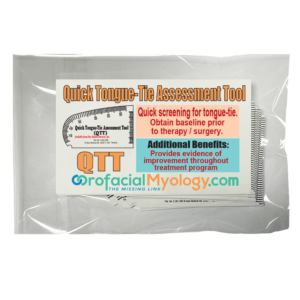
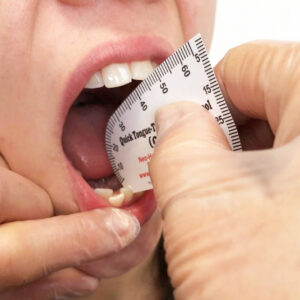 Select options
Select optionsQuick Tongue Tie Assessment Tool
$7.49 – $54.99This disposable tool is used to perform a quick test for tongue-tie (ankyloglossia) as well as for general oral and facial measurements. Easy to use for right and left handed people. Measurements on both sides of tool. Directions are included in the package.
See Video
-
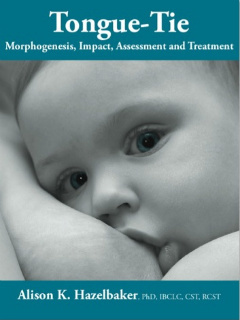 Add to cartMORE INFO
Add to cartMORE INFOTongue-Tie Book by Alison Hazelbaker
$99.99Tongue-tie: Morphogenesis, Impact, Assessment and Treatment busts the myths associated with tongue-tie that prevent the re-establishment of routine assessment and treatment of the condition in the early postpartum period. Dr. Hazelbaker provides both the old and new evidence that enables clinicians to properly assess, diagnose and treat this genetic condition that creates so many problems with infant feeding, speech and orofacial development. Dr. Hazelbaker presents the embryological and physiological underpinnings of tongue-tie, discusses tongue-tie’s impact, provides information on assessment and classification then rounds out her book with research-based treatment options and guidelines. She weaves in her personal story, having been tongue-tied and being the mother of two formerly tongue-tied children, as well as the stories of many other families into the science, creating both a readable and credible book. Tongue-tie: Morphogenesis, Impact, Assessment and Treatment is the definitive book on tongue-tie that will serve health professionals and policy-makers worldwide as they endeavor to change the clinical culture surrounding this common but underappreciated problem.
-
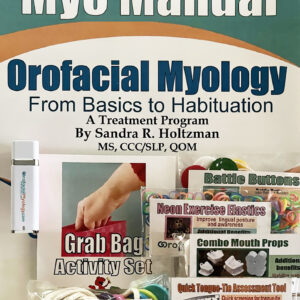
 Add to cartMORE INFO
Add to cartMORE INFOMyo Manual: From Basics to Habituation – Myo Kit
$249.00The MYO KIT includes the Myo Manual, the 6 six basic tools and the Grab Bag Activity Set to start your treatment program. The Myo Manual Treatment Program, used worldwide in all types of facilities, is the culmination of the author’s lifetime of experience treating and studying oral myofunctional disorders and “tongue thrust.” It includes proficiency exams, observation sheets to establish baselines, two tracks for subconscious training, sample evaluation and oral examination forms, Night Time Charts, Time Charts and an Appendix Section with additional forms. All three phases are covered: Pre Treatment Conditioning, Chew-Swallow Mechanics, and Integration into Lifestyle. Dozens of exercises are provided for every small step along the way, providing you with detailed exercise activities tailored for each of your patient’s individual needs. This is a must for every speech pathologist, dental hygienist and dentist who wants to provide a Systematic, Sequential, and Sensible treatment program for oral myofunctional disorders of all types. BONUS! 100% credit for this purchase may be applied toward the Neo-Health Services introductory course in orofacial myology for those who are eligible and choose to attend.
This Treatment Program includes two auto-suggestion tracks to be downloaded upon purchase: Adults and older children, and Younger children.
See Video

